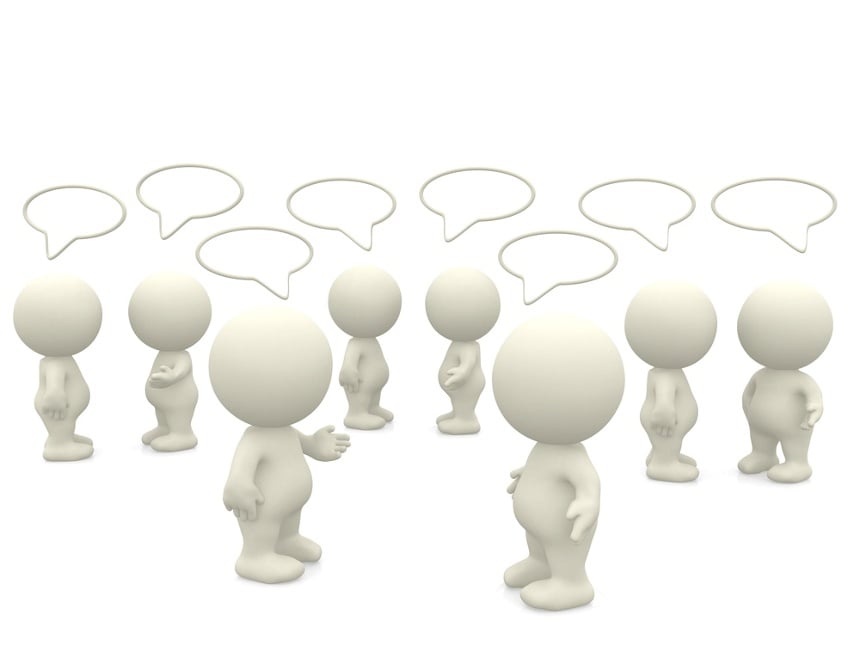Let's be clear: Conversations and business have been tied at the hip as long as business — the act of exchanging goods and services for fun and profit — has been around. You literally could not operate without them. It doesn't matter if it's internally or externally — conversations drive business. Period.

So if you've always been having conversations, and conversations are core to your business already, then why do you need to develop a specific strategy around them? The key here is the "growth" part of conversational growth strategy. Having conversations as a function of your business is different than using conversations to grow your business.
We want growth, not just maintenance, right? Here are five reasons why you need to develop a conversational growth strategy now:
1. Conversations Are Natural
A conversation between two parties is the natural way that we, as people, are used to communicating. We're conditioned to them from the time we first learn to speak, and we, without thinking, are able to both collect and provide information within them. Having a conversation with someone is a normal occurrence that nearly everyone on the planet does, several times per day. Why not leverage the most natural way of communication strategically? (Hint: It's a trick question — of course you want to!)
Fun fact: The average person in Britain (based on the Courage Beer Conversations survey from 2010) has 27 conversations per day.
2. Conversations Are Easy
Want to start a conversation?
Say "Hi, my name is [YOUR NAME]..."
It's really that simple (I do hope that you realized that; it isn't rocket science). Some people may ignore you — that's okay. The ones that don't will respond, and off you go. Easy peasy.
Not everyone likes to make small talk, but the beauty of conversation is that you don't have to. After that simple greeting, you can be as to-the-point as you want. As long as you aren't full-out rude, people will take the time to respond. Think of it as taking a "shotgun" approach, where you target as many people as possible. Say "hi" enough times, and someone will respond to you. It's all a numbers game.
Pro tip: If someone doesn't respond to you, don't take it personally. They may be busy. If you're using live chat (or a chatbot) on your website and not seeing any interaction from visitors, try changing up the initial message (this is easy to do with HubSpot Conversations' targeted message feature).
3. Conversations Let You Casually Collect Information
When we're having conversations, we give up personal information without even realizing it. Meet someone new, and don't know their name? You would probably introduce yourself and ask for theirs, right? Want to stay in touch at the end? You might ask for their email address or other contact info. Did someone tell you something that may be valuable in a future conversation? Odds are you'll remember that (or at least you should!), and keep it in mind for the next time you talk.
Pro tip: With HubSpot Conversations and chatbots, you can easily use the native integration with HubSpot CRM to save responses and information directly to the record of a contact, 100% automatic.
4. Conversations Happen for a Reason
Most conversations happen for a reason. When you walk into a store and you're there for a purpose, do you ask for help? If you need to order a drink at a bar, do you engage with the bartender? Of course you do.
Short of just pointing at the pictures on the menu at Denny's (which is still a type of conversation), we have conversations for a specific reason. We have them because we need something, want something, or are providing something. If conversations happen for a reason, why not have a strategy behind why you, and your business, have them?
Here are 6 reasons why people have conversations:
- To give information
- To get information
- To get someone to do something
- To stop someone from doing something
- To make someone feel good
- To make someone feel bad
Pro tip: Don't do #6. Enough said. Just don't do it. It isn't nice.
5. Conversations Drive Relationships
At the end of the day, conversations enable us to build 1:1 relationships. We learn from each other, interact with each other, and exchange thoughts, ideas, wants, and needs. We do this freely and naturally.
Conversational growth is about increasing the success of your business by building 1:1 relationships with prospects and customers, one conversation at a time. With chatbots we can do this at scale. To drive growth conversationally, we look to the three pillars of conversational growth:
- Time To Live (or T.T.L.)
- Shared Knowledge
- S.C.O.P.E
- Standardize for consistency.
- Contextualize for relevance.
- Optimize for clarity.
- Personalize for impact.
- Empathize for compassion.
To learn more about developing your own conversational growth strategy, check out the new learning track in HubSpot Academy — you won't regret it!



